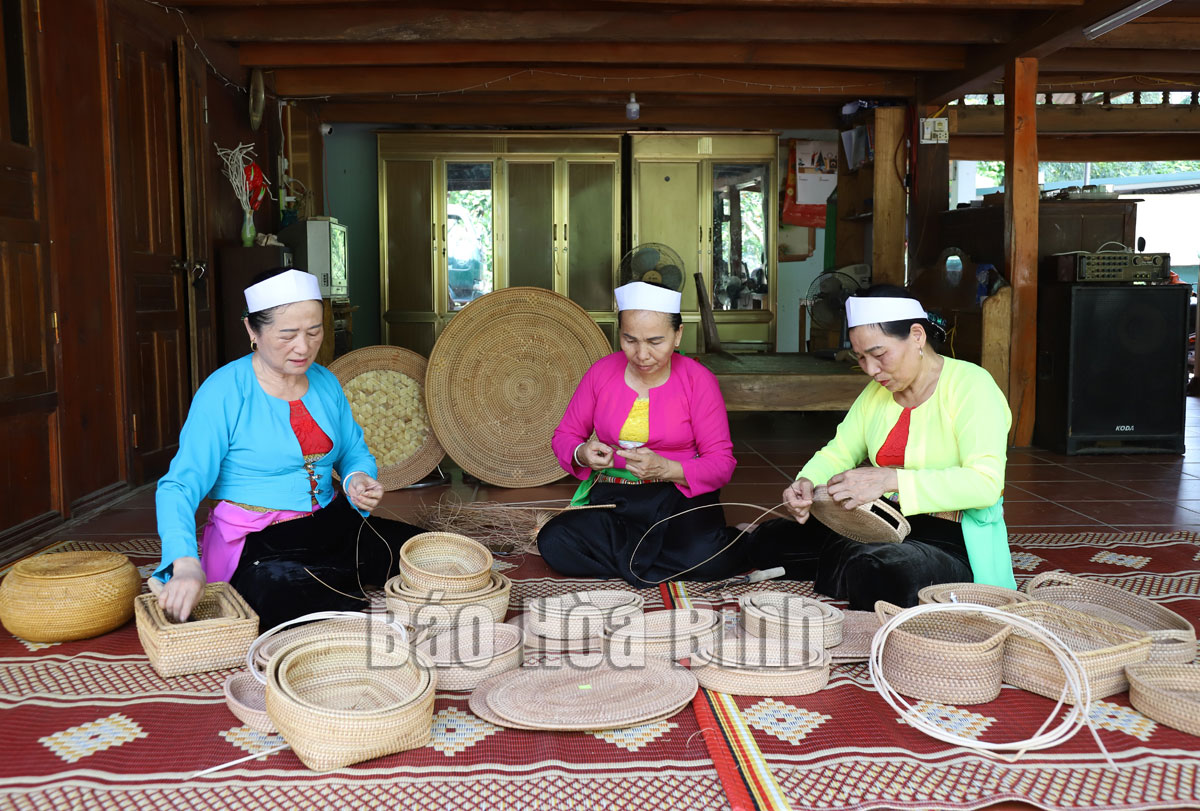Many households
in Bui hamlet, Nhan Nghia commune (Lac Son district), have developed the craft
of bamboo and rattan weaving, which helps increase their incomes.
Ethnic minorities in Hoa Binh account for 74.31%
of the province’s population which includes Muong, Thai, Tay, Dao, Mong and some
others.
In ethnic minority areas, the economy mainly
relies on non-commercial agricultural and forestry production. The average per
capita income is only around 40 - 45% of the province's. Although the poverty
rate has decreased, there remains a high risk of relapse. The situation
requires more effective mass mobilisation work.
Over the recent years, the Party committees,
local authorities, the Vietnam Fatherland Front (VFF)’s chapter in Hoa Binh and
political and social organisations have intensified communication and education
efforts to raise awareness among officials, party members, and local residents
of ethnic affairs.
Various programmes, policies, and investment
projects have been implemented to support and promote socio-economic
development in ethnic minority areas, resulting in positive changes in
socio-economic development in the locality and enhancing the great national
solidarity.
Bui Tien Luc, head of the provincial Party
Committee’s mass mobilisation commission and President of the province’s VFF,
said the mass mobilisation system at all levels has strengthened coordination
with agencies and sectors, thus proactively grasping and advising the Party
committees on handling complex issues in ethnic minority area.
Attention has been paid to promoting the role of
reputable individuals in ethnic minority areas, he added.
Hoa Binh has 1,276 reputable individuals in
ethnic minority areas. They serve as a backbone and vital link between the
Party committees, local authorities, and people, contributing to mobilising and
encouraging ethnic minority people to effectively follow the Party's guidelines
and the State’s policies, and laws; and strengthening the great national
solidarity bloc.
The provincial People's Committee has directed
specialised agencies to closely monitor the tasks related to ethnic affairs,
particularly concentrating resources on developing infrastructure serving
socio-economic development in difficult communes.
Hoa Binh has so far had 73 communes recognised
as new-style rural areas, accounting for 56.58% of the total. It has developed
123 products meeting the standards of the "One Commune, One Product”
(OCOP) programme. The annual poverty rate in the locality has been reduced by
3%.
The socio-economic development is closely linked
to investment in developing transport infrastructure, electricity grids, and
hydropower projects in remote and mountainous, and ethnic minority areas.
The specific policies aimed at supporting
socio-economic development in ethnic minority areas have been effectively
implemented, helping improve living conditions for the communities.



